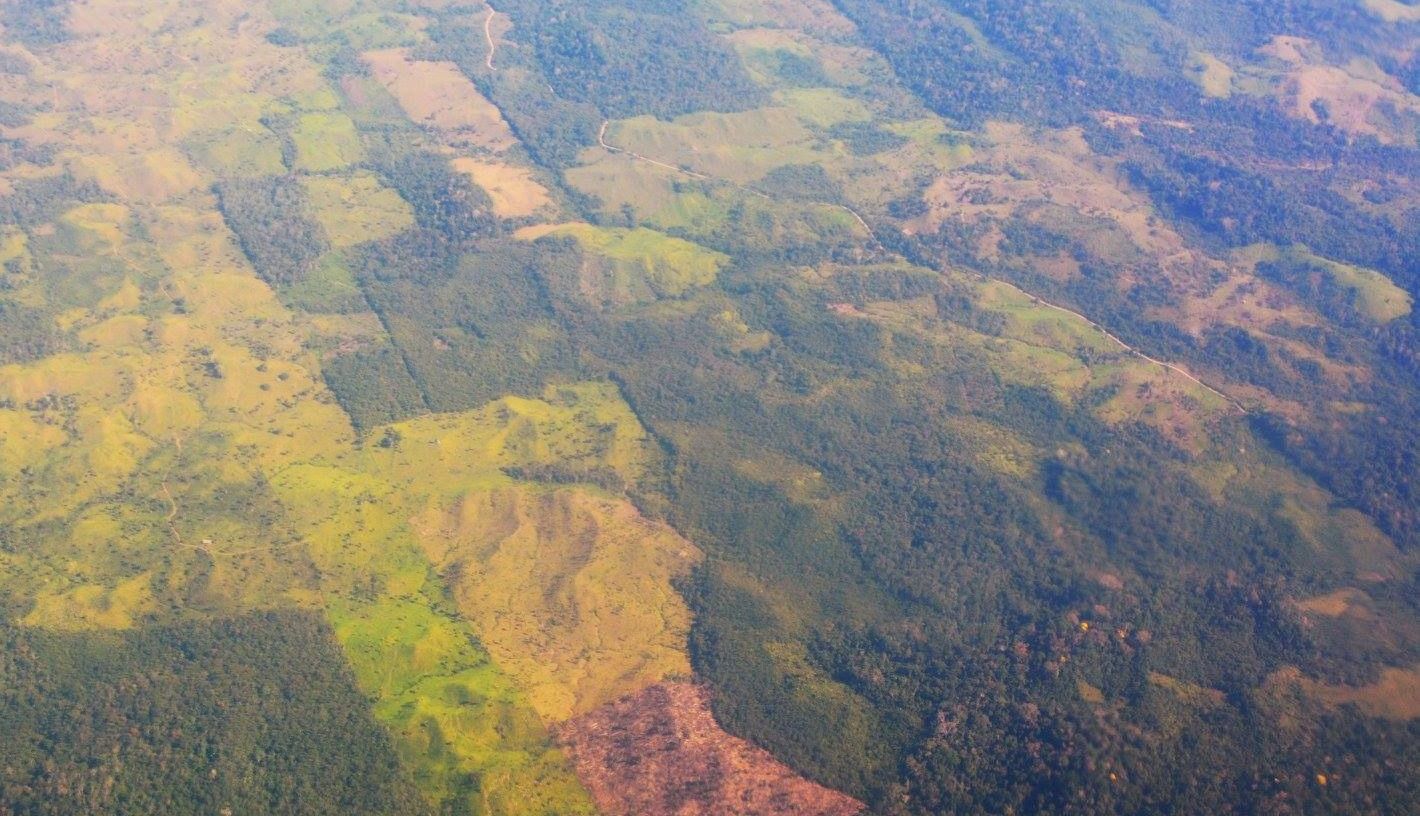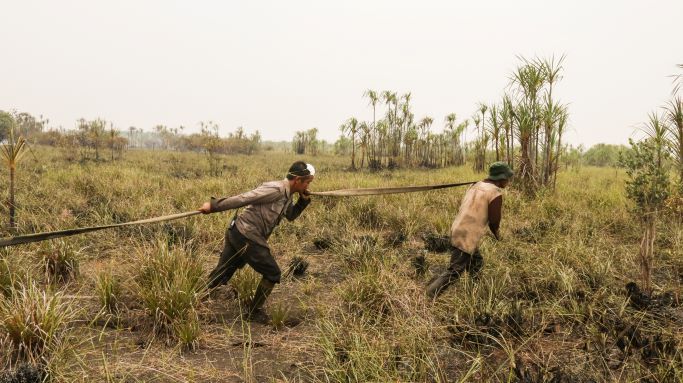On May 22, the International Day for Biological Diversity takes center stage worldwide. It commemorates the adoption of the Convention on Biological Diversity in 1992— and has long been more than just a calendar entry. This day serves as a global call to protect the fragile web of life that sustains our collective future.
Human well-being is intrinsically tied to the health of our ecosystems. Biodiversity is the foundation of all life on Earth. It provides us with food and clean air, shapes our cultural identity, supports our health, and forms the backbone of stable economic systems. This finely tuned balance of ecosystems impacts every aspect of human existence.
Yet, this very foundation is beginning to crumble. The planet is heading toward its sixth mass extinction. Species are disappearing at an unprecedented rate. Forests give way to fields and roads. Oceans warm, wetlands dry up—and the web of life that sustains us grows thinner with each passing day. Protecting biodiversity is non-negotiable; it is essential for our survival.
This is why the International Day for Biodiversity holds such significance, alongside the international framework it represents: the Convention on Biological Diversity (CBD), its protocols, and action plans. Tropical rainforests are at the heart of the biodiversity crisis—and are simultaneously central to potential solutions against climate change.
Rainforests: Cradles of Biodiversity
Rainforests are among the most impressive and life-sustaining ecosystems on Earth. They are ancient, lush, and full of secrets—a natural wonder of global significance. Although they cover only about 6% of the planet's land area, they are home to over half of all known terrestrial species of plants and animals. On just one hectare of tropical rainforest, you can discover hundreds of tree species, thousands of insects, rare orchids high in the canopy, and mammals found nowhere else on Earth.
These ecosystems form the beating heart of biodiversity—interwoven with symbiotic relationships that have evolved over millions of years. Every bird, frog, fungus, and fern plays a role in maintaining the delicate balance of the forest. In return, these forests sustain us: they regulate rainfall patterns across entire continents, stabilize the global climate by storing vast amounts of carbon in trees and soils, filter water, moderate temperatures, and produce oxygen.
Rainforests are also living pharmacies. More than 25% of all modern medicines are derived from compounds found in rainforest plants. From cancer treatments to painkillers, the healing potential of these ecosystems remains largely untapped. For millions of indigenous and forest-dwelling people, rainforests are far more than just resources: they are homes, sacred places, classrooms, kitchens, and retreats all in one.
Yet, they are disappearing. Every year, millions of hectares of rainforest are cleared—for agriculture, livestock farming, mining, and logging. Species are going extinct before they are even scientifically documented. Forest fragmentation disrupts life cycles and weakens the resilience of entire ecosystems. Especially in the Amazon, scientists warn of a critical tipping point: if deforestation continues unchecked, large parts of the forest could transform into a dry savanna landscape—irreversibly affecting climate and biodiversity worldwide.

The aerial image shows an area in the Peruvian Amazon, where tropical rainforest alternates with deforested patches. The irregular, lighter areas are signs of deforestation and land use, often for agriculture or livestock. These "scars" in the green mosaic of the forest highlight the ongoing loss of natural habitat. Each cleared area symbolizes the decline of one of the Earth's most biodiverse ecosystems. Photo taken in 2015 (© Mariel Ruiz-Gonzalez).
Peatlands: Borneo’s Hidden Giants for Climate and Biodiversity
Beyond the towering trees of Borneo's lowland rainforests lies another often-overlooked ecosystem: peat swamp forests. These ancient wetlands store carbon accumulated over millennia in thick layers of peat, making them one of Earth's most powerful natural climate protectors.
However, Borneo's peat landscapes are facing significant threats. They are drained for palm oil plantations, infrastructure projects, and timber extraction, and are further degraded by illegal logging and frequent fires.
When the delicate balance of these peatlands is disturbed, they stop being climate protectors and instead become climate problems. Vast amounts of CO2 and methane are released into the atmosphere.
In Sebangau National Park, located in Central Kalimantan and spanning over 600,000 hectares, GREEN BOOTS is collaborating with its partners to restore balance in these critical ecosystems:
- Small dams are being constructed to rehydrate drained areas.
- Community-based fire brigades are trained and equipped to prevent and rapidly combat fires.
- Local communities, including young people, are being trained as land stewards to ensure long-term protection.
These peat forests are much more than carbon sinks. They are living landscapes, home to Bornean orangutans, gibbons, hornbills, and many other species. Their rivers provide food, income, and cultural identity to local communities.
Protecting these ecosystems is one of the most effective and urgent actions in the fight against biodiversity loss and climate change. By safeguarding them, we also protect the future of the people who live in and depend on these landscapes.

Firefighting teams in action in the Sebangau National Park on Borneo (© Borneo Nature Foundation).
More Than Trees: What True Reforestation Really Needs
Tree planting has become a powerful symbol of environmental commitment. But planting trees alone does not equate to restoring forests. Without solid knowledge, careful planning, and long-term care, even the best-intentioned efforts can do more harm than good.
Monocultures—plantations of a single species—can deplete soils, disrupt water cycles, and displace native species. Non-native or invasive tree species often provide neither food nor habitat for local wildlife, turning what should be vibrant ecosystems into “green deserts.” Even well-meaning projects fail when they ignore the complexity of natural ecosystems or the needs of surrounding communities.
Biodiversity must be the foundation of any reforestation effort. The selection of seeds is crucial to its success. Planting the wrong trees in the wrong places can cause more harm than good: native plants are displaced, sunlight is blocked from ground-level vegetation, and wildlife corridors are disrupted.
A healthy forest is far more than a collection of trunks—it is a dynamic network of relationships. From fungi and mosses to amphibians, birds, mammals, and invisible microorganisms, true forests are multilayered and diverse. Without this diversity, resilience is lost.
Well-planned reforestation can restore biodiversity. But success is only possible when the forest is seen not just as a CO2 sink or a seedling statistic, but as a living system. True reforestation emerges from the fusion of science and indigenous knowledge. It begins with selecting native tree species suited to the soil, climate, and local biodiversity. However, this is only the first step. The seedlings must be nurtured, protected from pests and fire, and monitored over the years—with fences, fire prevention, and water management.
Reforestation is not a solo endeavor. It is a collective effort—driven by communities, elders, farmers, youth, scientists, and institutions. A regenerated forest does not grow on its own—it is created together. It embodies shared knowledge, shared labor, and shared hope.
Valuable Is What Sustains Life: Time for a New Logic of Financing
An increasing number of governments, companies, and organizations are turning to so-called Payments for Ecosystem Services (PES). Those who protect or restore nature receive financial compensation for the invaluable benefits they provide: clean water, stored carbon, and preserved biodiversity. Such incentives can drive positive change, make ecological care visible, and honor the often-overlooked work of nature stewards.
However, compared to harmful subsidies, these payments often represent just a drop in the bucket. Every year, billions are funneled into development projects that promote deforestation, overfishing, water scarcity, or climate-damaging agriculture. This creates systemic imbalances: sustainable actions remain underfunded, while harmful practices continue to receive support.
The challenge is not just economic—it is also interpersonal. The future of conservation requires understanding, not division. It’s not about pitting farmers against forests or the economy against ecosystems. It’s about creating systems where both can thrive: livelihoods and landscapes.
What if, in the future, government funds supported regenerative agriculture, reforestation, and indigenous land management? What if we considered farmers' experiential knowledge, scientific insights, and political governance together? Building these bridges requires a willingness to engage in dialogue and the courage to embrace change. It is not enough to promote the "right" projects. We must also learn how to promote them properly: fairly, inclusively, and with a long-term perspective.

Living Jewels of the Rainforest: The image shows delicate, shining butterfly eggs at Pilpintuwasi, a wildlife rescue center and butterfly house in Iquitos, Peru. The tiny eggs resemble living gemstones, full of radiant beauty in shape and color – yet they are even more precious, as they carry the promise of new life. The Amazon is home to thousands of butterfly species, a symbol of the extraordinary biodiversity of this ecosystem. Photo taken in 2015 (© Mariel Ruiz-Gonzalez).
Loss of Biodiversity – More Than the Disappearance of Species
The decline in biodiversity is not an isolated environmental crisis. Biodiversity loss is deeply linked to the most pressing challenges of our time.
Climate Change
Forests, oceans, wetlands, and other natural habitats store vast amounts of carbon dioxide, acting as critical carbon sinks. When they are destroyed, we lose this vital storage function—and release immense amounts of greenhouse gases. At the same time, intact ecosystems protect us from extreme weather, regulate rainfall, and support agricultural diversity. As nature diminishes, our world becomes increasingly vulnerable.
Food Security
Biodiversity ensures the variety on our plates and our ability to adapt to changing conditions. Pollinators help crops thrive, healthy soils nourish plants, and genetic diversity provides protection against diseases. Yet 75% of global food comes from just 12 plant species and 5 animal species—a dangerously narrow system.
Health
Many modern medicines are derived from wild species. Unfortunately, many of these species vanish before we can unlock their medical potential. At the same time, habitat destruction brings humans and wildlife into closer contact—creating a risk factor for new diseases. Protecting nature is not just about preserving ecosystems; it's about safeguarding public health.
Mental Well-Being
Nature heals not only the body but also the mind. Studies show that spending time in green spaces reduces stress, alleviates anxiety, and mitigates depression. Forests, rivers, and meadows are more than just places for recreation—they offer peace, connection, and meaning. With every lost habitat, a piece of our mental well-being is also lost.
Peace and Justice
When nature suffers, it often impacts those who depend on it most—often indigenous and rural communities. Environmental destruction can lead to displacement, exacerbate social tensions, and fuel conflicts. Conservation, on the other hand, can build bridges: creating more just societies, stable livelihoods, and peaceful coexistence.
Culture and Identity
Biodiversity is not just biological; it is cultural heritage. Our languages, customs, festivals, and stories are deeply rooted in the vibrant world around us. When species disappear, so too do meanings and connections. When habitats vanish, we lose a piece of ourselves.
"When a language dies, we not only lose words. We lose knowledge, stories, and our connection to the forest."
— Erick Alfredo Valerio Benavides, Indigenous leader of the Iskonawa people in the Peruvian Amazon.
What GREEN BOOTS Does
At GREEN BOOTS, we are firmly convinced that the protection of biodiversity starts locally—through restoration, collaboration, and collective action.
As a nonprofit organization, we focus on the protection and regeneration of tropical rainforests. Our work supports a wide range of initiatives aimed at restoring ecosystems, empowering local communities, and fostering a global culture of responsibility. From peatland rewetting projects in Southeast Asia to community-based conservation efforts in the Amazon, GREEN BOOTS is dedicated to creating tangible, sustainable impact.
By partnering with indigenous peoples, scientists, youth groups, educational organizations, and policymakers, GREEN BOOTS helps preserve vital habitats, create sustainable livelihoods, and strengthen ecological leadership.
What You Can Do: Everyday Choices for Biodiversity
The protection of biodiversity is not just the responsibility of science and politics—each of us can make a difference. Whether you live in a bustling city, the countryside, or somewhere in between, your daily decisions shape the future of life on our planet.
Consume Consciously
Our shopping behavior shapes the environment, biodiversity, and our future.
- Choose sustainably produced products.
- Support companies that prioritize biodiversity and fair supply chains.
- Reduce waste, repair items instead of buying new, and recycle electronics responsibly.
Protect Nature Locally
You don't need a rainforest to make an impact—even your balcony, schoolyard, or city park matters.
- Support or engage in local conservation projects.
- Advocate for the preservation of green spaces in your community.
Digital Earth Hour: A Break for Nature
Inspired by Earth Hour, give yourself a daily hour away from the internet and social media.
- Use the time for a walk, to read a book, or simply to listen to nature.
- This reduces your digital carbon footprint and helps you reconnect with what truly matters.
Reconsider Your Digital Footprint
The internet consumes vast amounts of energy, and its ecological impact is often underestimated.
- Avoid unnecessary emails (especially "Reply All").
- Delete unnecessary cloud files to save storage space and energy.
- Keep devices for as long as possible and dispose of them responsibly.
Support Conservation Organizations
Donate to or get involved with NGOs like GREEN BOOTS that work to preserve ecosystems.
- Participate in citizen science projects to monitor wildlife, water quality, or tree populations.
Stay Informed and Curious
Awareness drives change.
- Ask questions: Who benefits from deforestation? Who suffers from it?
- Recognize greenwashing and demand genuine transparency and credible action.
Raise Your Voice
The more people engage, the stronger the movement becomes.
- Share facts, solutions, and stories about biodiversity in your networks.
- Participate in global campaigns like #BiodiversityDay or #HarmonyWithNature.
- Support environmental advocates—especially indigenous leaders, scientists, and journalists.
Shape Political Change
Encourage your local politicians to integrate biodiversity into decision-making processes.
- Vote for nature’s causes in elections and referendums.
May the International Day for Biological Diversity remind us that change is possible—and that it starts with us.
Author: Mariel Ruiz-Gonzalez, Intern
Further Resources and In-depth Information
Videos
Climate change: can money stop deforestation? (The Economist, 2022)
https://www.youtube.com/watch?v=cOfWyCkcSvg – aufgerufen am 29.04.2025
How losing biodiversity could be killing us (DW Planet A, 2023)
https://www.youtube.com/watch?v=-608IrAFiOM – aufgerufen am 30.04.2025
Wetlands for livelihoods: local communities thrive by protecting mangroves and peatlands in Borneo (Nature4Climate, 2024)
https://www.youtube.com/watch?v=QbCXaK8PVCs – aufgerufen am 29.04.2025
Why Tree Planting Campaigns Don’t Work (PBS Terra, 2023)
https://www.youtube.com/watch?v=iSm0nvOa07w – aufgerufen am 29.04.2025
Bibliography
Eigth Tips for Eating for The Planet. WWF. https://www.wwf.org.uk/better-basket , aufgerufen am 30.04.2025.
Global Biodiversity Framework and the finance sector. UN Environment Programme. Finance Initiative. https://www.unepfi.org/nature/gbf-finance-sector/ , aufgerufen am 29.04.2025.
Harmony with nature and sustainable development. United Nations. International Day for Biological Diversity 22 May. https://www.un.org/en/observances/biological-diversity-day , aufgerufen am 29.04.2025.
How a grassroots financing model is helping Indigenous communities save the Amazon, 2025. UN Environment Programme. https://www.unep.org/news-and-stories/story/how-grassroots-financing-model-helping-indigenous-communities-save-amazon , aufgerufen am 29.04.2025.
Holland, Jackie, 2021. Nature’s pharmacy: The remarkable plants of the Amazon rainforest – and what they may cure. The Telegraph. https://www.telegraph.co.uk/travel/cruises/articles/how-to-be-a-botanical-buff/ , aufgerufen am 30.04.2025.
Hunt, Katie. 2022. Amazon near tipping point of shifting from rainforest to savannah, study suggests. CNN World. https://edition.cnn.com/2022/03/07/americas/amazon-tipping-point-climate-scn/index.html , aufgerufen am 29.04.2025.
International Day for Biodiversity 2025. Conservation on Biological Diversity. https://www.cbd.int/biodiversity-day , aufgerufen am 29.04.2025.
Observing Earth Hour 2025. Earth Hour is about solidarity, hope and the power of collective action. Conservation on Biological Diversity. https://www.cbd.int/article/earth-hour-2025 , aufgerufen am 29.04.2025.
Spotlight on nature and biodiversity, 2025. UN Environment Programme. News. Nature Action. https://www.unep.org/news-and-stories/news/spotlight-nature-and-biodiversity , aufgerufen am 29.04.2025
The 17 Goals. United Nations. Department of Economic and Social Affairs. Sustainable Development. SDG Knowledge. Sustainable Development Goals. https://sdgs.un.org/goals , aufgerufen am 29.04.2025.
The Global Biodiversity Framework and the 2030 Sustainable Development Goals. UN Environment Programme. https://www.unep.org/interactives/biodiversity-sdgs-tool/ , aufgerufen am 29.04.2025.
UN Day. International Day for Biological Diversity 2025. UN Environment Programme. https://www.unep.org/events/un-day/international-day-biological-diversity-2025 , aufgerufen am 29.04.2025.
United Nations Observances. United Nations. Peace, dignity and equality on a healthy planet. https://www.un.org/en/observances , aufgerufen am 29.04.2025.


